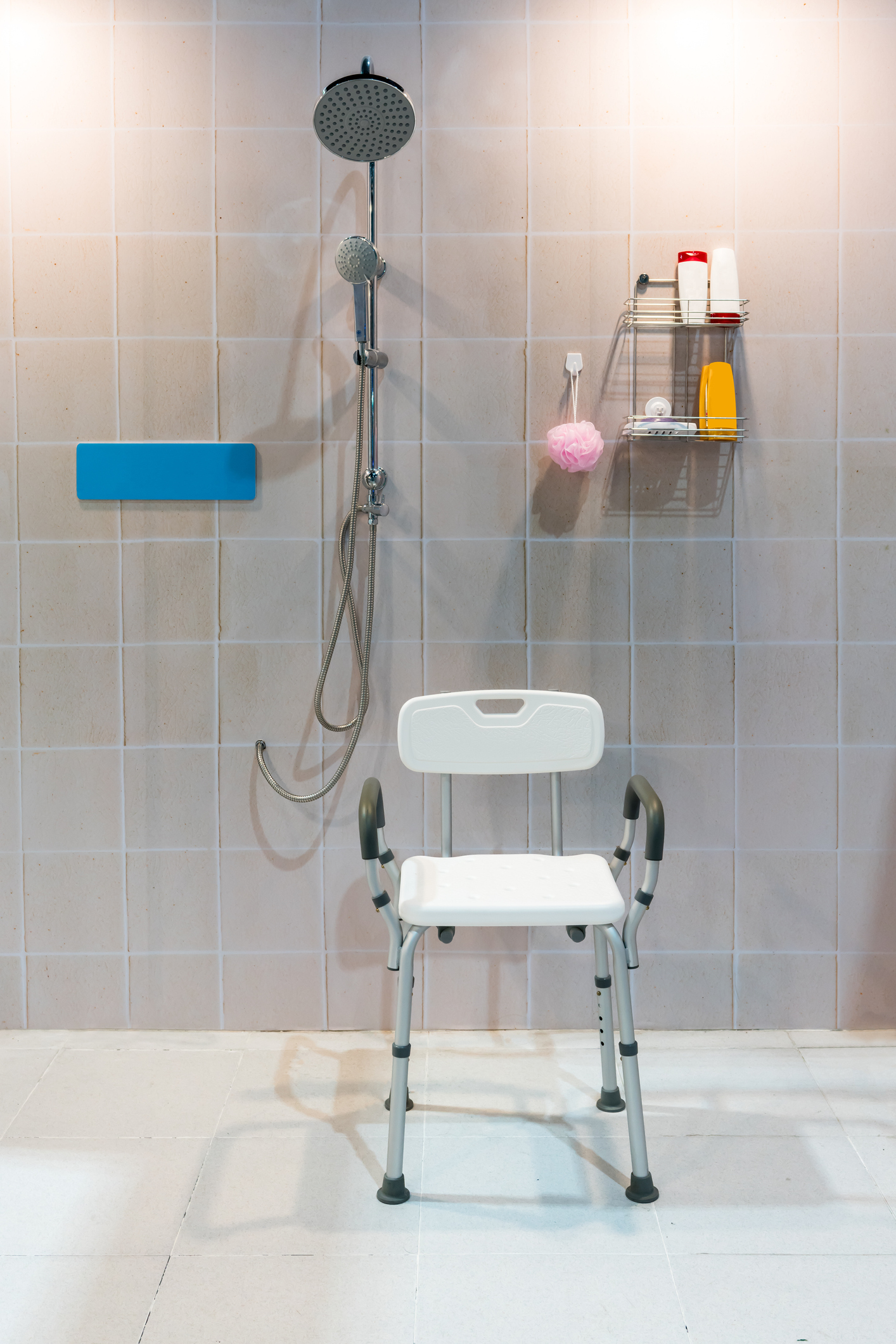How To Clean Your Shower Chair
Posted by Build My Wheelchair on Sep 28th 2023

If you or someone you love has limited mobility, you likely use a dedicated chair daily to assist with at-home baths or showers. A shower chair isn’t just a convenient tool, but also a source of independence and privacy for those with disabilities.
Like anything that is frequently exposed to moisture and dirt, shower chairs need to be cleaned regularly to keep users safe. When neglected, these chairs can become an ideal breeding ground for mold, mildew, and bacteria – all of which can compromise the health of the user.
At Build My Wheelchair, we’re committed to helping customers feel empowered and safe in all elements of their lives, including when bathing. That’s why we’ve compiled this how-to guide for cleaning bath and shower chairs.
Read on to learn everything you need to know, including what cleaning agents to use and how often you should thoroughly scour your shower chair.
Step 1: Lightly Clean Your Chair Daily
Most health experts will recommend that you rinse and wipe down your chair every time it’s used. This will help deter the harmful buildup of dirt and grime, and it’ll make more thorough cleaning sessions less time-consuming later in the week.
This is especially crucial if your shower chair has any cushions or fabric parts. A cushion or soft-back can retain plenty of water after a bath or shower, so make sure to rinse it, squeeze any leftover water out, and leave it to dry in a safe place.
In fact, it’s a good idea to remove the entire shower chair from the bathroom after it has been used. Bathrooms tend to be one of the moistest places in your home, which means they are also prone to increased risks of mold and mildew growth.
By storing your shower chair somewhere dry, you’ll decrease the likelihood of mold and ensure it’s clean and ready for its next use.
Step 2: Wash the Chair Components
At least once per week, it’s recommended that you give your shower chair a more intense cleaning. This is especially true if you use a shower chair cover, which likely can (and should) be thrown in the washing machine every seven days.
We typically recommend that you also clean the chair’s metal and plastic components at least once a week, if not every other week. You can do this using soap and water, or you use other advisable cleaning solutions such as ammonia and water or distilled vinegar.
Some shower chair users also swear by using tile cleaning products to clean their equipment, which is especially effective at preventing mold, mildew, and bacteria growth.
Avoid using overly harsh chemicals or pressure when washing the chair, as you do not want to scratch the surfaces. Scratches aren’t just unsightly – they can increase the risk of hidden bacteria and mold growth.
Once you’ve finished cleaning the chair, you can spray the entire thing with an antibacterial solution to finalize the wash and no microorganisms breed.
Step 3: Clear the Shower Chair of Cleaning Agents
After you’ve washed your shower chair, make sure to thoroughly rinse it. You don’t want any cleaning agents sticking around and irritating the user’s skin during their next bath or shower.
Sensitive skin is especially susceptible to reactions after exposure to cleaning agents. If the chair user experiences any redness, swelling, or itchiness after using the shower chair post-cleaning, it’s possible that they are having a reaction to the products that were used.
Thus, it’s always smart to thoroughly rinse the chair after it’s been cleaned. Then, wait until it’s fully dry to use once again.
Step 4: Address Mold Growth Immediately
During your next shower chair cleaning, keep a wary eye out for mold and mildew. The growth may appear brown, green, red, or orange and will likely seem slimy in texture.
In most cases, mold is relatively harmless, even in our own showers. However, direct exposure and skin-to-skin contact aren’t advised, especially for those with lowered immune systems and respiratory or allergy conditions.
If you’ve spotted mold or mildew on your shower chair, tackle it quickly with bleach or white vinegar. You can also use specific mold-removing cleaning products, many of which you may already have on hand for cleaning your shower or bathtub.
Make sure to wear gloves and a mask while applying these cleaning agents, as they aren’t safe for you to breathe in.
Once you’ve scrubbed away the unwanted growth, place the shower chair in a cool, dry place. Check it before using it again, and if necessary, take further steps to ensure the chair is fully free of mold and other contaminants.
Need to Replace Your Shower Chair?
Most shower chairs are designed to last for many years, even with daily use. However, if yours is showing signs of wear and tear or even deterioration, it might be time to switch it out.
Feel free to browse the Build My Wheelchair bath systems collection. We carry everything from heavy-duty shower chairs to transfer benches, so you or your loved one can bathe with as much independence and functionality as possible.
We also provide a range of homecare options for those with limited mobility. Take a look at our website to find hospital beds, lift chairs, wheelchair accessories, and much more.
Have questions about our shower chairs or another product? Call 844-269-4335 or contact us via our website. One of our representatives will be happy to answer your query and guide you toward the right solution for your circumstances.



